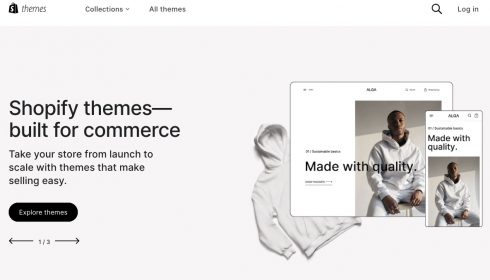How to explore overseas sales potential
Hello, my name is Sophie and I am a consultant.
In order to find out the sales potential of your product overseas, you can conduct user opinion surveys on similar products, use SNS management and analysis tools, and conduct N3 surveys.
User opinion survey on similar products
When determining a company's potential in foreign markets, it is extremely important to first research user feedback on products similar to their own. Since customer feedback is directly related to the success or failure of a product, understanding their reactions can provide insight into market trends, consumer preferences, and even the strengths and weaknesses of your product compared to competitors. Below are several techniques for doing so.
- Leverage Social Media: Social media is a highly effective tool for capturing the voice of the consumer; research how customers are mentioning your product through platforms such as Facebook, Twitter, and Instagram. Social listening tools can also be used to track specific keywords and hashtags to understand user responses in real time.
- Online Reviews and Ratings: Amazon and Google reviews, review sites, and blog posts are also important resources for gathering user feedback on similar products. Analyzing this information can help identify customer satisfaction, specific feedback on the product, and areas for improvement.
- Questionnaires and interviews: The above methods may not cover all the information a company wants to know. For a more in-depth understanding of customer sentiment, a survey or interview should be conducted. This allows for a detailed study of consumers' specific opinions, feelings, and product expectations.

Use of SNS management tools
Using social networking management and analysis tools to determine the potential of your brand in foreign markets, and to understand which regions and countries are the most promising markets, is critical in today's global business world. Below are a few techniques to help you do just that.
- Social listening: refers to monitoring and analyzing social media conversations. Specific keywords or hashtags can be tracked and the results can be used to understand consumers' opinions and feelings about your brand or product. Social listening can also be used to understand which countries or regions are posting the most, or in what languages.
- Competitor Analysis: By analyzing the Social mediaactivities of your competitors, you can explore which markets they are successful in and why. This can be a very useful resource in developing strategies to help your brand succeed in foreign markets.
- Demographic Analysis: ManySocial mediamanagement and analysis tools provide demographic data such as age, gender, and geography of followers. This information can be used to determine which regions and countries your brand is popular in and which people are interested in your brand.
- User sentiment analysis: Analyze sentiment from user submissions and use the results to understand general sentiment toward the product or brand. For example, if there is a lot of negative feedback in a particular region, it may be difficult for the brand to succeed in that market. On the other hand, a region with a lot of positive feedback could be a market where the brand could be successful abroad.
- Regional Activity Analysis: Identifies the regions with the most posts about the brand. This indicates the markets where the brand may have the greatest impact. Understanding what products and services consumers in these geographies are responding to will also help you develop a more specific market strategy.
- Trend Analysis: Understanding market trends and consumer preferences is important for predicting how well a product or service will be accepted in foreign markets. Social mediaAnalyzing the data above provides this information.
As described above, SNS management and analysis tools can help you understand how your brand is accepted in overseas markets and which regions and countries have the potential to have a market. This will allow you to formulate your business strategy more effectively and achieve success in the global marketplace.

N3 Survey
The n3 survey is an innovative qualitative method in which three subjects are gathered and interviewed by one person.
This approach was proposed by Masanobu Ogawa, a former McKinsey consultant who now works as an hr consultant. He states that 50% of the world's businesses fail to recognize elementary errors; the n3 approach aims to identify them early and correct course in the right direction. Rather than spending large amounts of time and money on data collection and analysis, it is argued that it is far more practical to make decisions quickly and accurately within a limited time frame.
The key advantages of n3 are speed, cost savings, and the ability to uncover deeper insights. First, compared to traditional quantitative surveys, n3 surveys take much less time to collect and analyze data. Second, compared to large-scale surveys, n3 surveys are conducted on a smaller scale, which also results in sign if I can't cost savings. Finally, traditional studies are statistical and do not provide deep insights into individual subjects. however, n3 data provides deep insights to help companies find their own characteristics and leverage their advantages over the competition. Therefore, the n3 research methodology is highly recommended for companies that want to quickly gain insight into foreign customers at a low cost and use the results to determine their potential in foreign markets.
The following is a general procedure for n3 surveys. However, because the characteristics of each brand and item vary, specific procedures should be tailored to each situation.
- Target audience identification: Select three individuals who represent the target market or user. These could be potential customers, existing customers, or industry experts, depending on the target.
- Interview Preparation: Prior to the interview, prepare a list of questions to gain insight. Questions should be open and allow for full discussion.
- Conducting the Interview: The interview is conducted by one interviewer. It is important that this person be trained to facilitate a productive conversation without influencing the participant's responses. The interviewer should make the subject feel comfortable and willing to share his or her true feelings and experiences.
- Analyzing the results: After the interviews, the responses are analyzed to find insights and patterns that correspond to the research objectives: by looking at the similarities and differences in the responses of the three subjects, it is possible to understand the big picture.
- Leveraging Survey Results: The goal of an N3 survey is not simply to collect data, but to use that data to improve your business. Whether it is finding and correcting rudimentary errors, making faster and more accurate decisions, or gaining a deeper understanding of the market, the insights gained from the N3 approach can be a key component in developing new strategies.
Summary
We introduced user opinion surveys on similar products, The use of SNS management and analysis tools, and n3 surveys as methods for exploring sales potential in overseas markets. By combining these research methods, It is possible to evaluate sales potential in overseas markets. However, as a word of caution, don't forget that you need to consider various risks and challenges when expanding overseas, such as language and cultural differences, local legal systems, and the presence of competitors.
Achieve results with "minimum investment and effort.
Cross-border e-commerceOne-stop shop for services



